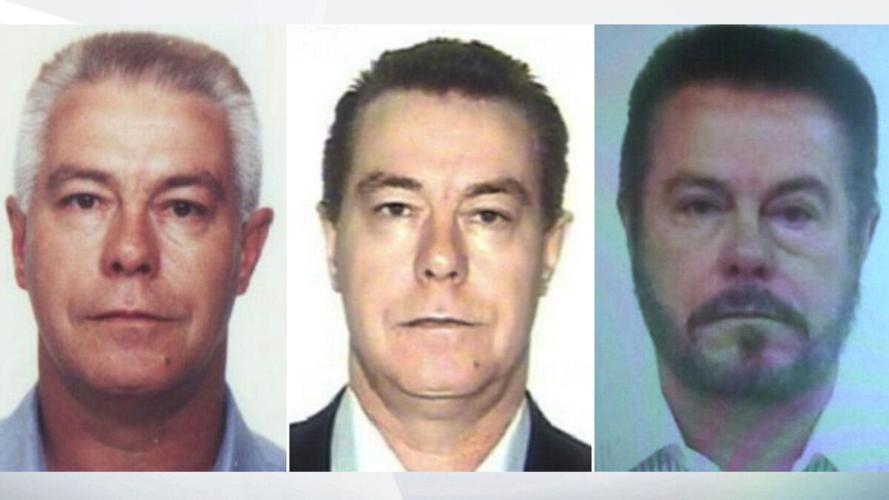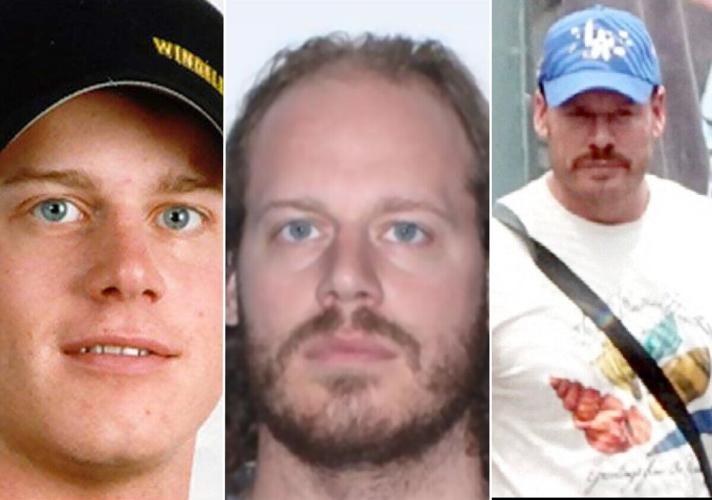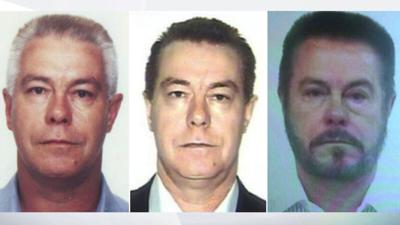They’ve remodelled their noses, smoothed out their wrinkles, and filled their faces with silicone. However, for these fugitives, the goal wasn’t to regain an air of youthfulness, but an attempt at freedom.╠²
That appears be in the case in the ongoing manhunt for ex-Olympian-turned-drug lord Ryan Wedding, sought by the U.S. Federal Bureau of Investigation for allegedly running a cross-border drug trafficking ring that routinely smuggled enormous quantities of cocaine into Canada and orchestrated multiple murders in Ontario.
U.S. authorities say there is ŌĆ£some evidenceŌĆØ that Wedding may have undergone cosmetic surgery to alter his appearance while on the lam.
ŌĆ£Altering one’s appearance has always been a countermeasure that fugitives or wanted parties have reached for,ŌĆØ said Michael Arntfield, a criminologist and professor at Western University.
ŌĆ£It used to be much easier ŌĆö until probably the ‘80s, you could make yourself disappear, relatively easy, right? ŌĆö but (combined) with the rise of medical tourism and we’re seeing this happening more and more.ŌĆØ

Ryan Wedding over the years: on the left as a Canadian Olympic athlete in 2002, in the middle in a FBI mugshot taken from a 2013 driver’s licence, and on the right in another FBI photo taken in 2024.╠²
Canadian Olympic Committee; FBIAs technology progresses, itŌĆÖs becoming increasingly difficult to shirk the authorities, said Sharrona Pearl, a historian whose research focuses on the face and body.
While plastic surgery has historically been used to evade authorities, modern facial recognition systems are highly sophisticated, requiring significant structural changes to the face to avoid detection, said Pearl.
The software╠² works by turning a personŌĆÖs face into a series of data points, then comparing them to other data sets taken from faces captured online or in governmental records and biometric screenings.
ŌĆ£The only kinds of (surgeries) that will presumably make it impossible for these systems to catch you are those that fundamentally alter the distances between those points on your face,ŌĆØ continued Pearl,╠²a professor╠²at Texas Christian UniversityŌĆÖs John V. Roach Honours College.
A nose job or an eye lift, for example, wouldn’t clear that bar. But ŌĆ£deep infrastructural changes,ŌĆØ such as chin surgery or jaw surgery, can alter one’s appearance drastically enough to help evade such technology, Pearl said.╠²
Tips from the public, and public recognition, remain some of the most important tools in a police investigation, says Arntfield.╠²
ŌĆ£So if it’s a high profile case, and the person doesn’t want to be recognized on the street by another citizen, then yes, thatŌĆÖs going to make identifying them considerably more difficult.ŌĆØ
But with tools such as facial recognition, biometrics, fingerprint identification and DNA analysis at investigators’ disposal, an altered appearance may no longer cut it.
ŌĆ£In many cases, people will undergo (physical) changes like this and we see them arrested nonetheless,ŌĆØ he said. ŌĆ£These minor modifications, aren’t going to fool the technology.ŌĆØ
Here are some of the more notable cases from over the years:

Tyler Adams, known as HawaiiŌĆÖs “master of disguise,” evaded authorities for years before being apprehended in 2023.╠²
Federal Bureau of InvestigationŌĆśMaster of DisguiseŌĆÖ
Convicted fraudster Tyler Adams, known as HawaiiŌĆÖs “master of disguise,” evaded authorities for years before he was apprehended.
In 2012, Adams, 51, was sentenced to 12 years in federal prison after he set up a handful of fictitious businesses to open bank accounts, make large deposits with fake cheques and then dupe the banks into handing the funds over in cash.
In 2019, however, he escaped a minimum-security community correctional facility in Hawaii.
He later crossed south over the border to Mexico, only returning three years later, after the body of his girlfriend, navy veteran Racqual Sabean, was found in the trunk of her Volkswagen Jetta in Tijuana.
In December 2023, Adams was brought back into custody in California on charges of grand theft, fraud and federal warrants, and was then extradited to Hawaii. While named as a suspect in SabeanŌĆÖs death, Adams was never charged in the case.
A little under a year later, he was sentenced to five additional years and ordered to serve the remainder of his sentence from the 2012 conviction.
According to authorities, Adams used more than 15 fake names and frequently changed his appearance in order to evade capture while committing fraud and identity thefts across the U.S. Court documents also suggest he underwent cheek and chin implants sometime before his 2012 conviction.
ŌĆ£He was known as the master of disguise because he often changed appearance, but he eventually did have some kind of procedure done as well,” said Arntfield.
‘Lollipop’
Juan Carlos Ramirez Abadia, a former Colombian drug lord also known as ŌĆ£Chupeta,ŌĆØ or ŌĆ£Lollipop,ŌĆØ was known for undergoing extensive plastic surgery in an effort to evade capture.
When asked about his varying appearance while testifying at an associateŌĆÖs trial in 2018, Ramirez Abadia told the court heŌĆÖd undergone at least three surgeries to alter his ŌĆ£jawbone, cheekbones, eyes, mouth, ears, and nose.” He also admitted to bribing Colombian authorities to destroy any criminal records that named him.
ŌĆśThe White HeadŌĆÖ
Luiz Carlos da Rocha, a drug cartel boss nicknamed “the White Head,” went under the knife repeatedly during his three decades at large, before his eventual arrest in 2017.
Da Rocha and his network were accused of producing cocaine in the jungles of Bolivia, Peru and Colombia, before distributing it throughout South America, the U.S. and Europe.
Police said da Rocha underwent a number of cosmetic procedures ŌĆ£that made him look 20 years youngerŌĆØ while on the lam and adopted the alias Vitor Luiz de Moraes to evade authorities.
At the time of his arrest, da Rocha had already been sentenced by Brazilian courts to more than 50 years in prison for international drug trafficking and money laundering.

After Anna Moriah Wilson’s death, Kaitlin Armstrong sold her vehicle and fled to Costa Rica. There, investigators said she spent more than $6,000 on a nose job and changed her hair to evade authorities.
Harris County Sheriff’s Office‘A jealous rage’
Kaitlin Armstrong, convicted in the 2022 murder of cyclist Anna Moriah Wilson, led investigators on a 43-day search before she was apprehended.
Prosecutors in Texas said Armstrong gunned down╠² Wilson, 25, in a “jealous rage” after Wilson briefly dated ArmstrongŌĆÖs boyfriend several months earlier.
After Wilson’s death, Armstrong sold her vehicle and used her sisterŌĆÖs name and passport to flee to Costa Rica. There, investigators said she spent more than $6,000 (U.S.) on a nose job and changed her hair to evade authorities.
The Costa Rican doctor never knew of Armstrong’s intention.
“In an interview years later, he did say he thought it was suspicious and that (Armstrong) didn’t want the usual before and after photos, and was very cagey about not having any sort of photographic evidence of how she initially looked,” Arntfield said. “But he was cleared of any wrongdoing because he didn’t obviously know that he was abetting someone.”
Underground surgeries╠²
If a fugitive wants plastic surgery, where do they turn? In some cases, unregulated hospitals.╠²And if those providing access to cosmetic surgeries are aware of their clientele’s criminal intention, there can be grounds for penalty or criminal charges.
Last year, that three clandestine hospitals in the southern suburbs of Manila, Philippines had allegedly been offering cosmetic procedures ŌĆö including hair and dental transplants and skin lightening services ŌĆö to fugitives.
According to local police, clients were largely employees of offshore online casinos, sometimes referred to as POGOs (Philippine Online Gaming Operations).
Police in Pasay City said the casinos largely cater to players in mainland China, where gambling remains illegal, but were also used to cover other criminal activities, including telephone scams and human trafficking efforts.
Three doctors, a pharmacist, and a nurse were arrested as part of a raid on one of the hospitals. None were licensed to work in the Philippines.
ŌĆśA new Richie RamosŌĆÖ
In a high-profile case from the late ‘90s, a Philadelphia surgeon was caught offering his services to fugitives looking to shake the cops.
In 1997, Dr. Jose Castillo, 68, was found guilty of harbouring a fugitive and obstructing justice in connection with procedures performed on cocaine dealer Richie Ramos.
According to prosecutors at CastilloŌĆÖs trial, the surgeon smoothed RamosŌĆÖ gunshots scars, remodelled his nose and removed nearly 50 pounds of fat from his waist and cheeks, all in a makeshift operator room in the basement of his home.
“A new Richie Ramos emerged, one whom a policeman who watched him grow up from the age of eight wouldn’t have recognized if he walked by him on the street,” prosecutor Kristin Hayes told the court, according to by the New York Times.
Whether a physician or clinic faces charges in cases like these largely depend on their level of culpability.
Historically, those at the higher echelons of the criminal underbelly “will have access to their own medical staff,” said Arntfield. In those cases, if the surgeon or clinician is caught and can be linked to a pattern of offering such services, they stand to face charges.
“But if there’s just a run-of-the-mill clinic and they just have a suspicious client, could they really be reasonably expected to have known that this person’s intentions?” he continued.“Like, what level of due diligence are they expected to uphold?”





























